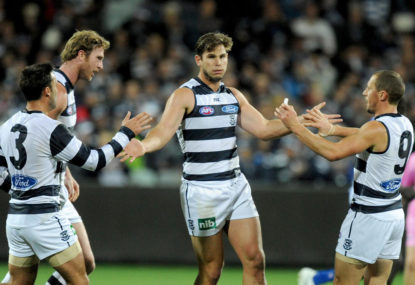The crucial cogs of AFL's Round 7: Which players need to be the difference makers?
We’re taking a look at one player from each team that needs to make a difference this week, starting with the ANZAC Day games.

Umpiring is hard in any sport. Unless you count chess, where basically if you know the rules and can see the pieces on the board you can umpire.
But generally speaking, umpiring is not easy. One must interpret and apply the rules to any given situation at the spur of the moment, based on an often unanticipated event that was over in a fraction of a second, while players and often spectators thunder in your ears.
In our code we are known to criticise umpires in the heat of the moment, but reserve enduring enmity for absolute howlers – or for series of decisions or non-decisions that, through the inconsistent application of the rules, favour one side over the other. We are mostly quite forgiving of the occasional marginal error.
Every season or two the AFL seems to be bitten by a bug of some sort. They need to eliminate rushed behinds. They need to crack down on deliberate out of bounds. They need to protect the ball carrier, then – perversely – penalise players who try to break tackles. They need to make life hard for the third man up. They need to get players to hurry up taking set shots. They need to reduce the likelihood of concussions.
More recently, it seems like the AFL gets carried away with a new craze on a week to week basis. The suspension of Tom Hawkins wasn’t only absurd in comparison with similar ‘offences’ from seasons past, it was absurd in comparison with similar ‘offences’ from earlier rounds.
In 1962, a man convicted of murder in Victoria received a lengthy prison term rather than the death penalty that was available at the time. It had been a particularly heinous killing and the Premier Henry Bolte vowed he would “get the next one.” As it turned out, the next one was innocent but hanged anyway, in ’67, despite the absence of any solid evidence. The MRP seems to have applied the Bolte approach to Tom Hawkins.
The AFL wants to protect players’ heads, a noble pursuit, and to discourage biff off the ball. When Tom Hawkins retaliated by striking Phil Davis on the collarbone with his fist, Davis threw his head back theatrically to draw a free. Hawkins’ fingers had made negligible contact with Davis’s chin.
A reasonable person couldn’t blame an umpire for being sucked in, but the Match Review Panel could watch the replay repeatedly, probably from a variety of angles, and still concluded it warranted a two-week ban. Two weeks, reduced to one for accepting the flagrantly moronic decision.
Hawkins’ ‘punch’ lacked venom. If Hawkins had intent, he could have put Davis into the third row. Tom Lynch, on the other hand, threw a haymaker into Jeremy Laidler’s guts that left the Swan on the ground for several seconds. The result? A fine.
If the rules of the league are such that the MRP has no greater sanction to throw at a player who has punched another in the stomach than a fine, then there’s something wrong with the rules. Clearly, eliminating the gratuitous gut-punch has not been in fashion. Whereas protecting the head, while no doubt a righteous objective, has been elevated to a point at which hyper-technical over-sensitive thinking has produced a manifestly ridiculous outcome in the Hawkins case.
The problem is much bigger than one case. The MRP needs reform to ensure there is a ‘reasonable person test’ introduced into both interpreting and applying the rules and into determining penalties. The Panel should ask whether something is outside the rules of the game and, if it is, than ask “what would a reasonable person conclude about the intent and actual effect of a player’s action?”. On that basis, it can move to the third step of determining a reasonable penalty – if one is required at all.